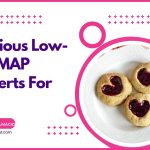Fatty Liver Pain: Causes, Mimics, and Treatment.
Our content is not intended nor recommended as a substitute for medical advice by your doctor. Use for informational purposes only.
1. How common is liver pain in fatty liver disease?
Liver pain is a rare presentation of fatty liver (nonalcoholic fatty liver disease or NAFLD). Fatty liver disease has different presentations (stages).
NAFLD (fatty liver or nonalcoholic fatty liver disease) is subdivided into NAFL and NASH (reference).
- NAFL (Nonalcoholic fatty liver): the most widespread type. NAFL is the accumulation of fat inside the liver without significant inflammation.
- NASH (Nonalcoholic steatohepatitis) refers to fat accumulation plus liver inflammation.
- Complicated NAFLD such as cirrhosis, fibrosis, and liver cancer.
Most patients with NAFL and NASH are asymptomatic. Therefore, liver pain is present in a minority of patients.
NAFLD affects about 32.3% of US citizens (roughly one-third of the Americans) (reference).
NASH is a more advanced stage of NAFLD. Among people with NAFLD, the prevalence of NASH ranges from 6.6% to 29.9% (reference).
No accurate data describes the prevalence of pain with fatty liver disease. However, liver pain in fatty liver disease is the exception rather than the rule.
possible causes include:
- Presence of liver enlargement (hepatomegaly).
- Presence of NASH (inflammation or steatohepatitis).
- Sometimes, people with fatty liver feel pain without hepatomegaly or NASH.
- You also have to consider non-liver causes of pain such as colonic and gallbladder pain (see mimics of liver pain below).
- In the late stages (liver cirrhosis or fibrosis), liver pain can signify liver cancer.
But note that, liver cancer is a very rare complication of NAFLD. For example, in one study, HCC due to fatty liver disease (NAFLD) with 0.44 cases per 100 individuals, which is very low compared to hepatitis B (reference).
MORE: Fatty liver 101: Causes, Symptoms, Complications, and life expectancy.
2. Fatty liver pain area and character.
Fatty liver pain location
The most common fatty liver pain location is the upper right abdominal quadrant (the liver area). The pain from the fatty liver can also be felt in:
- The right side of the rib cage.
- The back (on the right side).
- The right shoulder (rare).
Fatty liver pain character.
The pain in patients with fatty liver is often vague discomfort or a dull ache in the right upper abdomen.
Fatty liver pain is dull, constant (not colics). The pain is often felt for more extended periods and is unrelated to meals.
Also, The pain in the liver area may increase when you move or press on the liver area.
In late complicated cases, severe or sharp liver pain may indicate the presence of liver cancer (hepatocellular carcinoma). In addition, in these late stages, the symptoms of liver affection are often apparent with jaundice, weight loss, ascites, and swelling of the lower limbs.
3. Mimics of fatty liver pain.
Most patients with fatty liver don’t have liver pain, as we explained before.
Liver pain is rare with fatty liver disease because it is insensitive to pain.
Liver pain is felt due to a stretch, inflammation, or destruction of the capsule enveloping the liver (Glisson’s capsule).
Most chronic diseases such as fatty liver and chronic viral hepatitis don’t affect the liver capsule; thus, they are typically painless.
We are trying to say here that not every pain in the liver area is due to the liver. Many diseases and conditions can cause upper right abdominal pain in patients with fatty liver disease.
Common causes of upper right abdominal pain (mimics of fatty liver pain) include:
- The gallstone disease.
- Acute cholecystitis.
- Gastrointestinal diseases such as IBS, IBD, functional dyspepsia, etc.
- Abdominal muscle pain (muscle strain).
- Lower right rib cage pain.
- Inflammation of the right pleura (the lung envelope).
From the above causes, gallbladder pain is the most common and the most significant mimic of liver pain.
Gallbladder pain often arises from gallstones (causing biliary colics) or acute cholecystitis (acute gallbladder inflammation; often due to stones).
The table below illustrates the difference between gallbladder pain (uncomplicated gallstone disease) and fatty liver pain.
Description. | Biliary colics | Fatty liver pain |
| 1. Location. | Usually, The right upper quadrant of your abdomen. | Usually in the right upper quadrant (more diffuse than biliary colic). |
| 2. Spread. | – The pain may spread to the back of the right shoulder. – Also, it spreads to the epigastric area. | – The right side of the rib cage. – The right shoulder. – The right mid-back. |
| 3. Character | – In the form of attacks, it constantly builds up then disappears gradually. | – Constant dull ache, often less intense than the biliary colic. – May be sharp in complicated fatty liver disease (liver cancer). |
| 4. Duration | At least 30 minutes. It may last up to 6 hours. | Prolonged for days, weeks, or months. |
| 5. Related to: | – Triggered by foods (especially fatty food and large meals. – However, it can start spontaneously. | – The pain is continuous, not related to food. – Pressing on the liver area or moving may exacerbate the pain. |
| 6. NOT related to: | Movement, bowel movements, or the passage of flatus. | – Not related to food, bowel movement, nor the passage of flatus. |
| 7. Nausea. | Often Present, severe. | May or may not be present. |
| 8- Commonly associated symptoms | Vomiting, sweating during the attack, and nausea. | There are jaundice, dark urine, swollen lower limbs, swollen abdomen (ascites), coma, and weight loss. |
For more details, read the article: 4 causes of pain in the liver area that comes and goes.
4. Treatment of fatty liver pain.
Liver pain from fatty liver disease is often mild and vague. Typically, no medical treatment is needed. However, see a doctor if the pain is severe or affecting your sleep or activity.
The following are remedies that help to ease fatty liver pain:
- First, avoid fatty foods for a few days.
- Sit up straight to decrease liver the pressure on the liver by other abdominal organs.
- Drink water.
- Avoid gassy foods, carbonated and alocholic drinks.
- See a doctor if you are not sure about the cause of pain or severe pain.
- Lose weight.
- Low-fat and low-sugar diet.
- Some medications may also help, such as paracetamol (after consulting your doctor).
MORE:
- How Long does it Take to Reverse a Fatty Liver? (5 Facts).
- 6 Commonest Liver Lesions & When to Worry: (Benign vs. Malignant).
- Evidence-based
- Written by a doctor.

Related Posts:
- 5 Causes of Diarrhea After Eating Fatty Foods & Tips…
- Stomach Cramps And Gas: The 5 widespread causes…
- Liver Pain in Females: Location, Causes, Pregnancy, & More.
- Stomach Pain at Night and Early Morning: 6 Causes,…
- How Do Blood Clots Look Like In Urine (+ Mimics)
- 8 Warning Signs of a Dying Liver (Hepatologist Explains).











